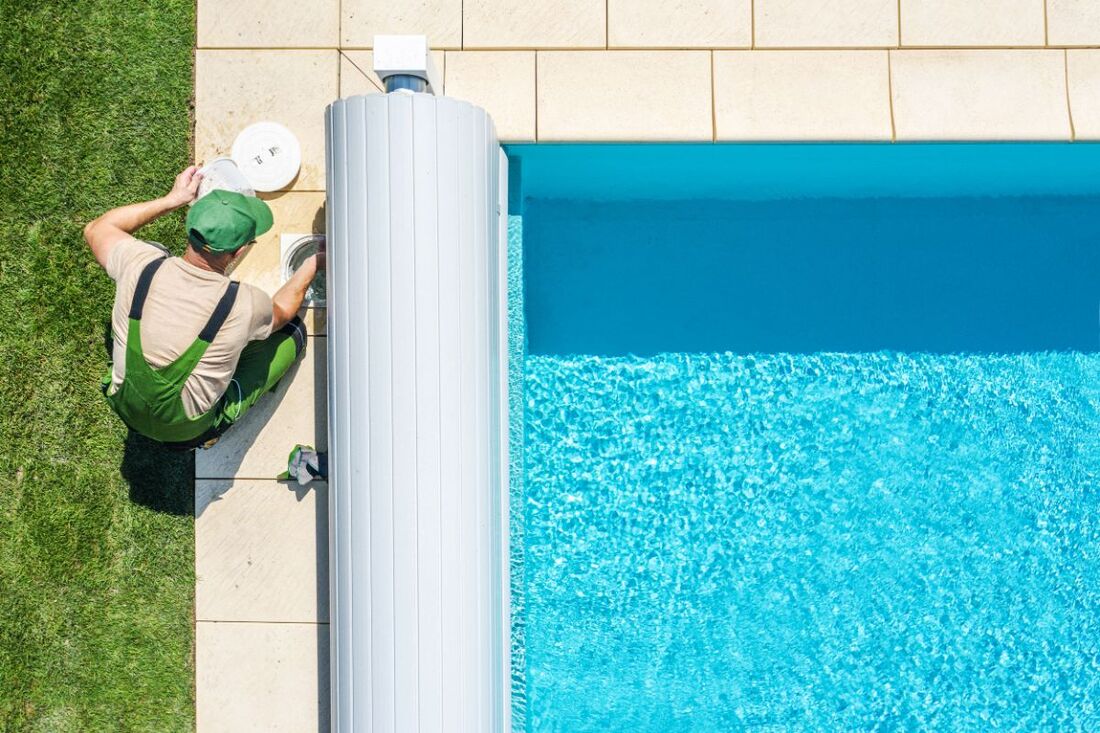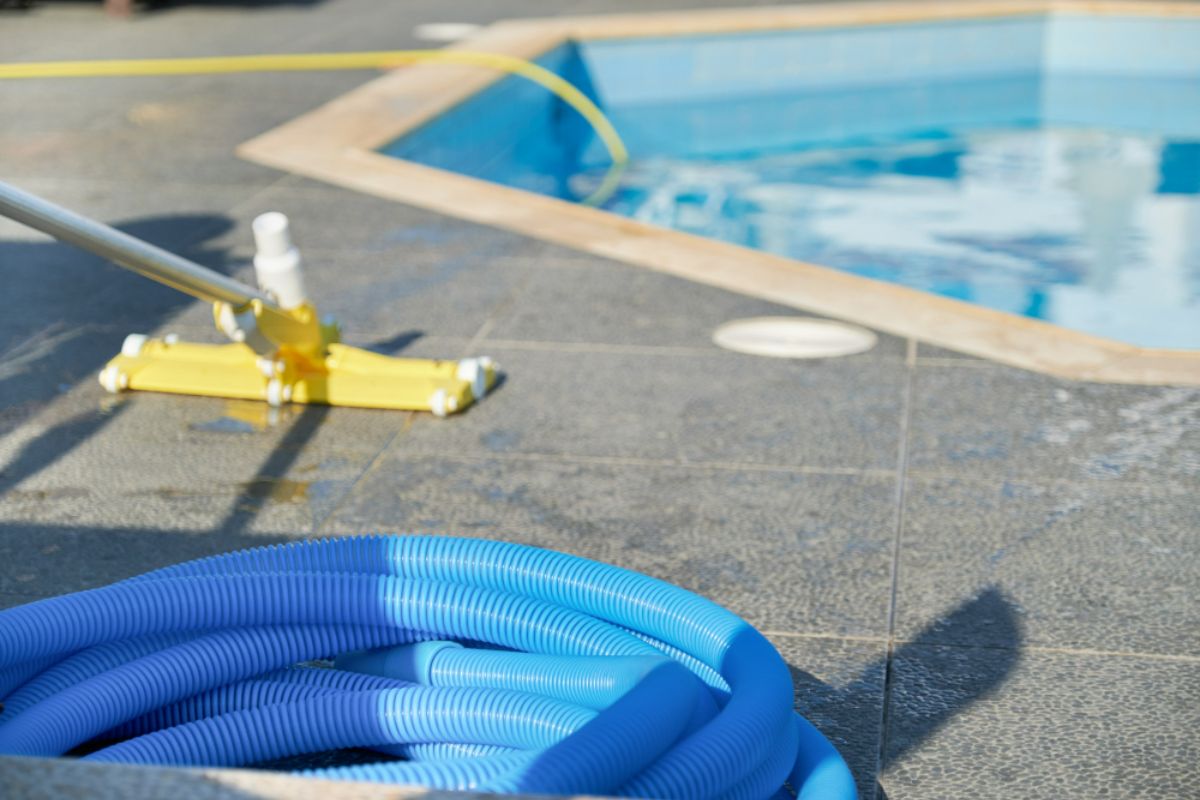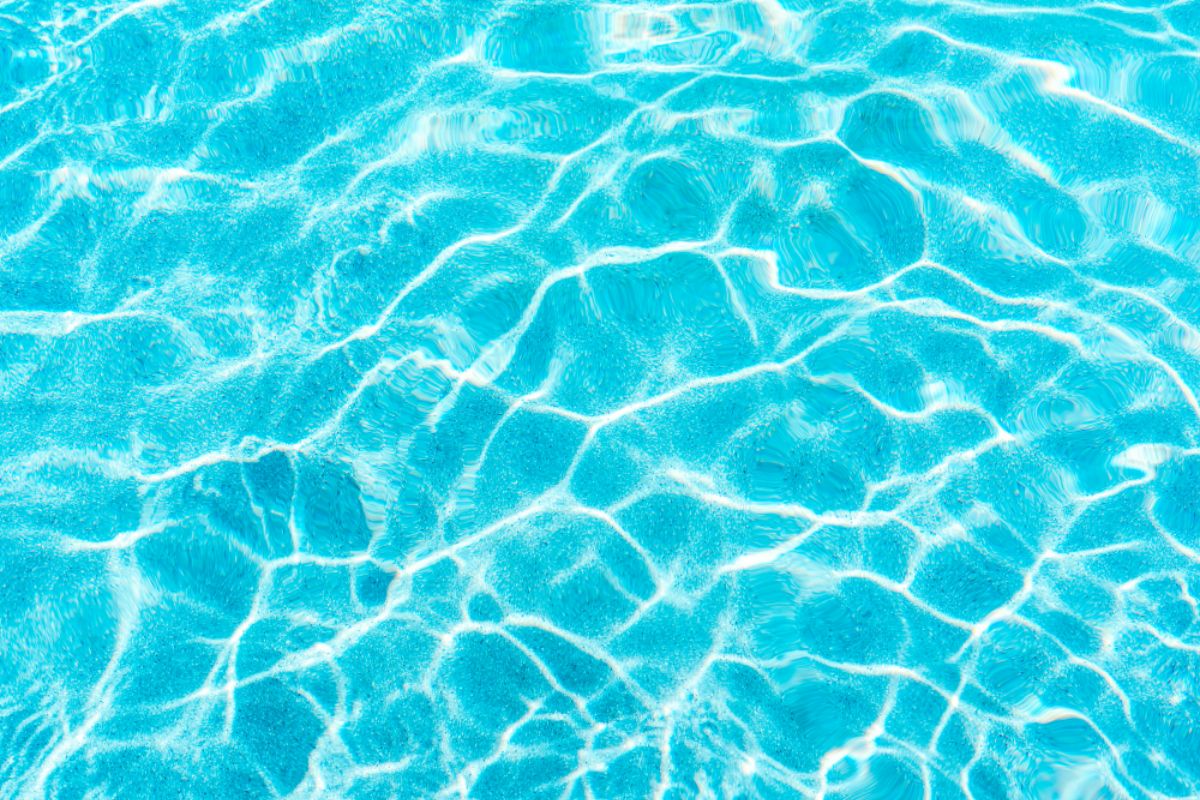How to maintain a swimming pool:
- Get rid of debris
- Clean your pool interior
- Check your pool filter
- Clean your skimmers
- Run your pump
- Balance your water chemicals
- Create a maintenance schedule
On a searing hot day, a swimming pool is a welcome respite — but before you dive in, you have to make sure your pool is in crystal-clear condition. To do that, you have to perform lots of maintenance tasks regularly.
Thorough care will ensure your pool has clean and safe water for whenever you want to take a swim. Here is our simple guide on how to maintain a swimming pool:
Get Rid Of Debris
The first thing to do is to clean your pool. Lots of debris, like leaves, dirt, and twigs, can make their way into the water. This is especially common when you have trees and other landscaping near your pool.
Skim the surface of the pool for floating debris with a rake or net. You can also use a pool vacuum to remove any debris stuck near the walls and floor of your pool. Dispose of them away from the pool so they can’t blow back in, or be tracked back into the water.
If you have overgrown foliage near your pool, consider trimming them back to reduce the amount of debris that falls into the water. Or, replace them with less messy varieties, or remove them from the vicinity of the pool.
Clean Your Pool Interior
 The pool interior is in constant contact with water — so it tends to grow algae and mold over time. Brushing the pool walls and fixtures regularly will help remove all of the build-ups that stick to the porous walls of your pool.
The pool interior is in constant contact with water — so it tends to grow algae and mold over time. Brushing the pool walls and fixtures regularly will help remove all of the build-ups that stick to the porous walls of your pool.
Use a brush with nylon bristles to scrub the walls and floor. Nylon bristles are important, as they prevent scratches on your pool tiles. Or, use a pool vacuum to effectively remove any debris, algae, and mold.
Check Your Pool Filter
After cleaning your water and your interior, the next part to check is your pool filter. A dirty filter can have a dramatic effect on water quality and circulation — if not maintained, then you could have cloudy or green water, even if everything else in your pool is clean.
Turn off your pool pump and close the skimmer valve in front of the pump before opening your pool filter. Popping it open and manually removing all the hair, dirt, leaves, and other debris in the pump should be good enough. You can also unscrew the trap’s cover to remove the basket and empty it directly into a garbage bag.
But, depending on how long it’s been since your filter has been cleaned, you might need to do some more maintenance. Chances are you have either a sand, diatomaceous earth (DE), or cartridge filter. Be sure to check your pool’s manual to see what kind you have, and what additional maintenance you need to do, such as backwashing and/or hosing down your filter elements.
Clean Your Skimmers
Clean your skimmers regularly. Aside from debris, small animals might also get stuck in your skimmer, so be sure to check them before you start using your pool. To do this, turn your pool pump off and remove the basket under your skimmer lids to access the skimmer.
Run Your Pump
Once your skimmer and filter are clean, it’s time to check your pool pump. This keeps your water running through the cleaning system, and ensures your water is properly filtered. We recommend running your pool pump for a few hours every day to make sure your water is clean and in good condition. This is especially important if you plan on using the pool frequently.
When your pool pump is on, check the water jets. They should be facing circular and downward to keep water circulating properly.
Balance Your Water Chemicals
Testing your water is a must-do before using a pool. Use our Pool & Spa 5 in 1 Test Strips to check your water’s chemistry, then adjust it accordingly with our pool chemicals. These include various kinds of sanitizers and disinfectants which help prevent the growth of bacteria, germs, and algae.
The first thing you should check frequently is the pH level. The pH scale goes from 0 to 14, where a 7 is neutral, below 7 is acidic, and above 7 is basic. Your pool’s pH levels should be between the range of 7.2 to 7.6.
If you’re past this range, you need to either use Dry Acid HCT to bring it down to 7.6, or soda ash to bring it up to 7.4.
Secondly, check chlorine levels. If it’s below 1ppm, then you need to dissolve some chlorine granules in your water. These dissolve easily and leave little to no residue. Another alternative is our chlorine tablets.
Create A Maintenance Schedule
 As you learn more about your pool’s maintenance needs, your to-do list can seem a bit daunting. But, creating a schedule can make it easier to keep on top of basic upkeep, and will help you plan ahead,
As you learn more about your pool’s maintenance needs, your to-do list can seem a bit daunting. But, creating a schedule can make it easier to keep on top of basic upkeep, and will help you plan ahead,
When making your schedule, keep in mind the three C’s: circulation, cleaning, and chemistry.
Circulation:
- Run the pool pump a few hours per day, especially when planning for frequent use.
- Clean the filter, skimmers, and basket. Do this immediately if pressure is above 10-15 psi
- Check water jets, make sure they’re facing circular and downward.
- Keep jets facing circular and downward
Cleaning:
- Brush all parts of the interior, including ladders and low circulation spots. We recommend doing this daily if the pool is being used frequently.
- Skim the water surface, preferably daily.
- Vacuum and deep clean at least once a week.
Chemistry:
- Test water at least once a week. You may have to do this more often with frequent pool use, or if heavy rain occurs.
- Balance pH levels.
- Maintain chlorine levels. You may have to do this bi-weekly.
Key Takeaway
Knowing how to maintain a swimming pool will help you with pool maintenance challenges as time goes on. With some time, and some trial and error, you’ll get a firm grasp of what your pool needs for its upkeep, and what you need to do to have clear, clean water in time for pool day!








 The pool interior is in constant contact with water — so it tends to grow algae and mold over time. Brushing the pool walls and fixtures regularly will help remove all of the build-ups that stick to the porous walls of your pool.
The pool interior is in constant contact with water — so it tends to grow algae and mold over time. Brushing the pool walls and fixtures regularly will help remove all of the build-ups that stick to the porous walls of your pool.
 As you learn more about your pool’s maintenance needs, your to-do list can seem a bit daunting. But, creating a schedule can make it easier to keep on top of basic upkeep, and will help you plan ahead,
As you learn more about your pool’s maintenance needs, your to-do list can seem a bit daunting. But, creating a schedule can make it easier to keep on top of basic upkeep, and will help you plan ahead,

